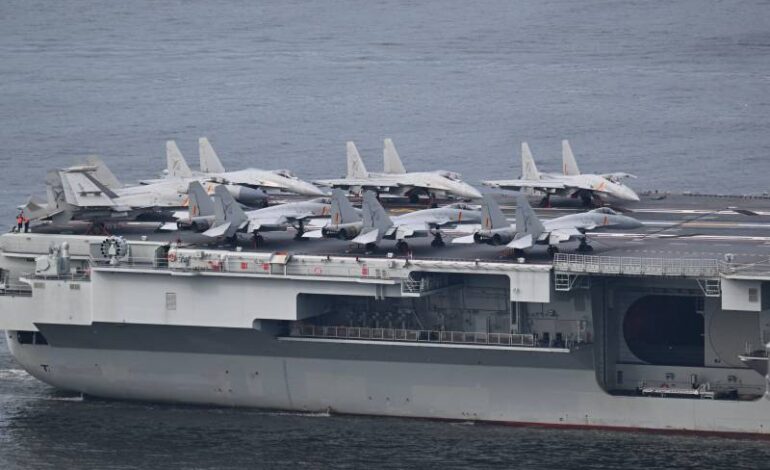
Chinese Aircraft Carrier Shandong Docks in Hong Kong After Pacific Drills
China’s first domestically built aircraft carrier, the Shandong, arrived in Hong Kong on Thursday for a five-day port visit, just days after the city marked the 28th anniversary of its return to Chinese sovereignty. The visit follows the carrier’s recent participation in combat exercises in the western Pacific, carried out alongside the Liaoning, China’s first aircraft carrier.
Commissioned in 2019, the Shandong is a key component of China’s rapidly modernizing navy and a symbol of its maritime ambitions under President Xi Jinping. The 300-meter-long vessel is accompanied by escort ships including the destroyer Zhanjiang and frigate Yuncheng. The fleet was spotted off the southern coast of Hong Kong Island early Thursday morning.
Beijing has announced that the carrier group will host tours and cultural exchange events during their stay in the city. Tickets for the public tours were quickly sold out via the Chinese social media platform WeChat, reflecting strong public interest in the country’s growing naval power.
Analysts view the carrier’s presence in Hong Kong as a strategic move to reinforce the image of China as a rising maritime power. Collin Koh, a naval affairs expert from the S. Rajaratnam School of International Studies in Singapore, noted that the visit aims to underscore the Communist Party’s ambitions to build “the status of a maritime great power.”
This marks the second time a Chinese aircraft carrier has docked in Hong Kong, following the Liaoning’s visit in 2017. Both vessels are based on modified Soviet designs and feature a ski-jump flight deck to assist with aircraft takeoff. China’s third and most advanced carrier, the Fujian, is currently undergoing sea trials.
The arrival of the Shandong follows its involvement in dual-carrier combat drills, a rare display of coordination with the Liaoning. Japan’s defense authorities described last month’s exercises as the first of their kind and a sign of China’s efforts to increase its operational capabilities in more distant waters.
Chong Ja Ian, a political scientist from the National University of Singapore, said the exercises suggest that both carriers are now capable of engaging in “more sophisticated operations,” although uncertainties remain regarding how often they can be deployed together.
China’s military buildup has raised tensions in the Indo-Pacific, particularly with the United States and its allies. A U.S. Department of Defense report published in December noted that China now possesses the world’s largest navy, with more than 370 vessels, including ships and submarines.
The Shandong has previously played a visible role in regional security tensions. In April, it participated in Chinese naval drills simulating a blockade of Taiwan—a self-governed democracy that Beijing claims as its territory. That same month, the carrier was reportedly present in Philippine waters during a joint U.S.-Philippines military exercise, heightening concerns in Manila over Chinese maritime activity.
China maintains that its military actions are defensive in nature, but analysts and neighboring countries see the expanded naval footprint as part of a broader strategy to challenge U.S. influence and assert territorial claims in contested regions of the Pacific.






